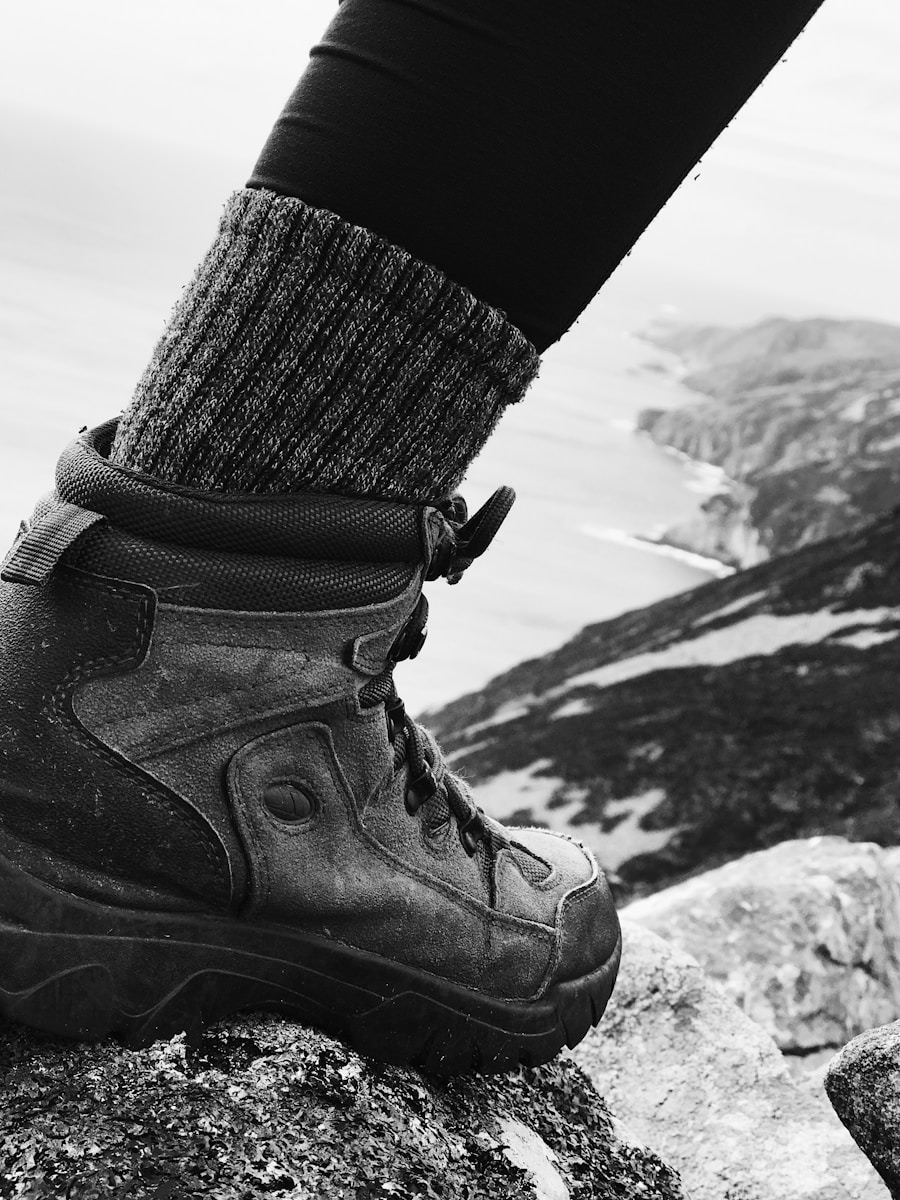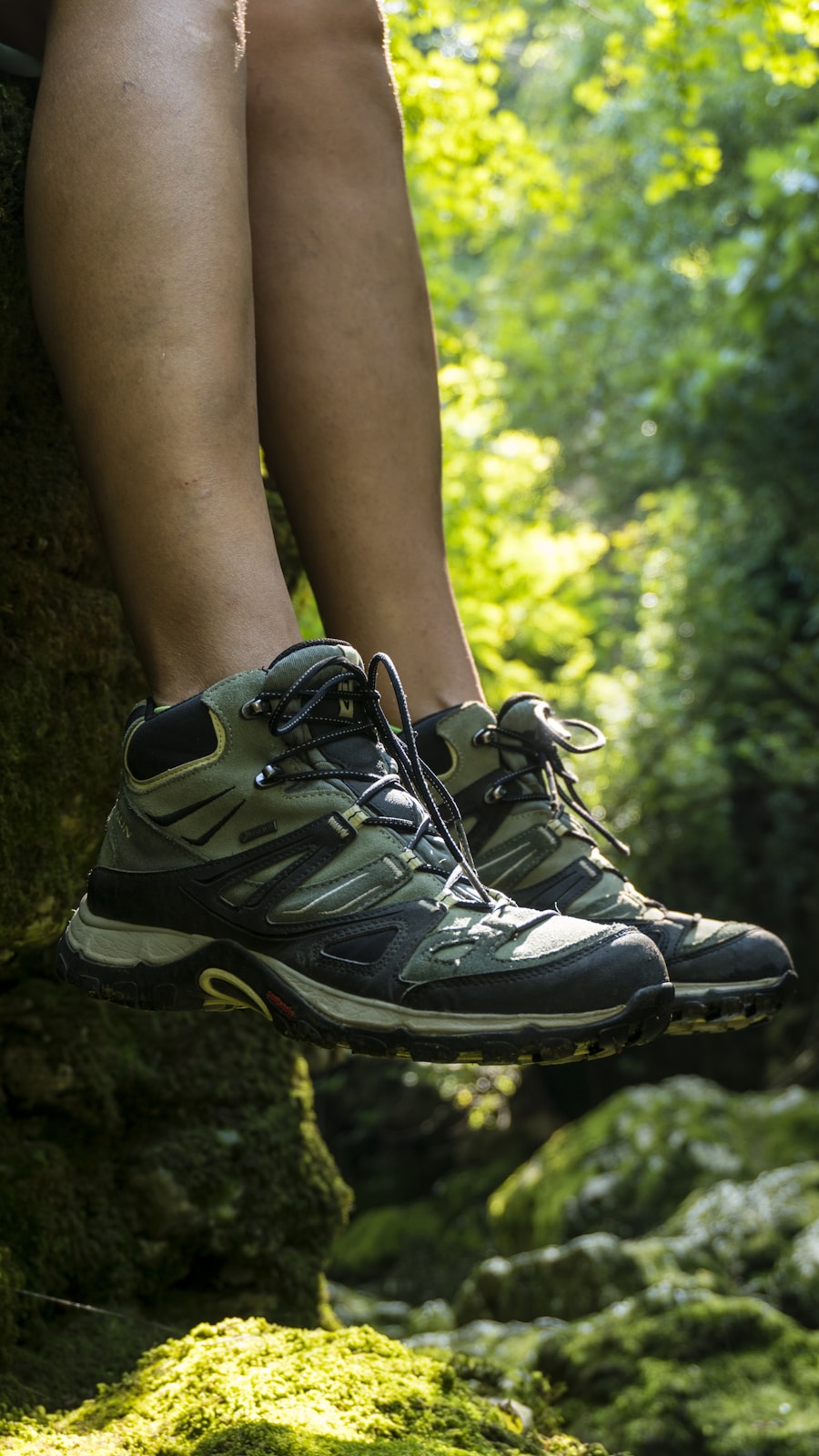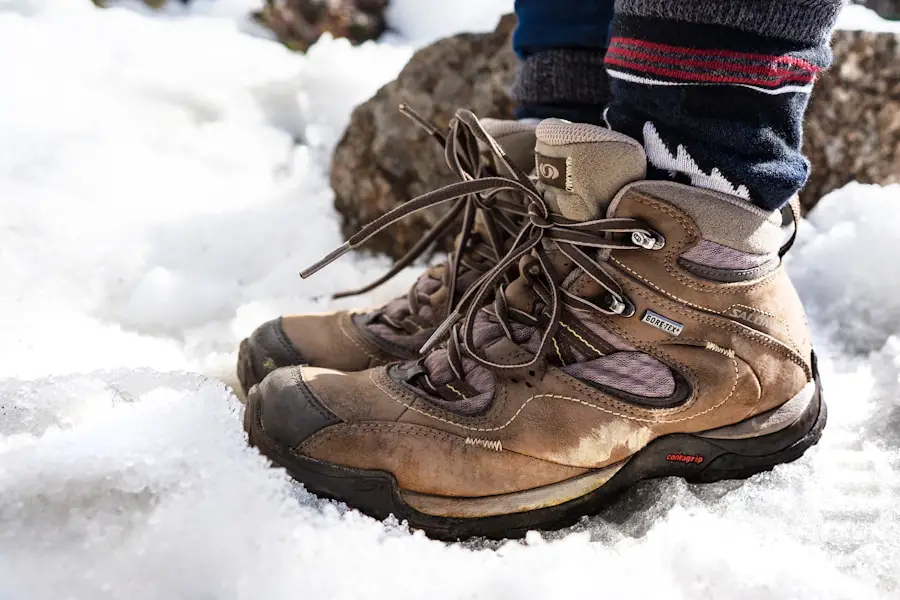Selecting the appropriate hiking boots is a critical decision for anyone who enjoys outdoor adventures. The right pair can significantly enhance your hiking experience, providing the necessary support, comfort, and protection against the elements. Hiking boots are not merely footwear; they are an essential piece of gear that can influence your performance on the trail.
A well-chosen pair can prevent injuries, reduce fatigue, and allow you to tackle various terrains with confidence. Conversely, the wrong boots can lead to blisters, discomfort, and even serious injuries, detracting from the joy of exploring nature. Moreover, the choice of hiking boots can impact your overall safety during excursions.
Different trails present unique challenges, from rocky paths to muddy slopes, and having the right footwear can make all the difference. For instance, a boot with adequate ankle support can help prevent sprains on uneven ground, while a sturdy sole can protect your feet from sharp rocks. Additionally, the right boots can enhance your grip on slippery surfaces, reducing the risk of falls.
Therefore, investing time in selecting the right hiking boots is not just about comfort; it is about ensuring a safe and enjoyable outdoor experience.
Key Takeaways
- Choosing the right hiking boots is crucial for a comfortable and safe outdoor experience.
- Durability and materials used in hiking boots impact their longevity and performance on the trail.
- Comfort and support features, such as cushioning and ankle support, are essential for preventing injuries and fatigue.
- Traction and grip are important for navigating various terrains, from rocky paths to slippery slopes.
- Waterproofing and breathability in hiking boots are key for keeping feet dry and comfortable in different weather conditions.
Durability and Materials Used in Hiking Boots
The durability of hiking boots is paramount, as they are subjected to harsh conditions and rugged terrains. High-quality materials play a significant role in determining how long a pair of boots will last. Common materials used in hiking boots include leather, synthetic fabrics, and rubber.
Leather is often favored for its robustness and ability to withstand wear and tear. Full-grain leather, in particular, is known for its durability and water resistance, making it an excellent choice for challenging hikes. However, leather boots may require more break-in time compared to synthetic options.
Synthetic materials, such as nylon and polyester, are also popular due to their lightweight nature and quick-drying properties. These materials often come with added features like breathability and flexibility, which can enhance comfort during long hikes. Rubber soles are another critical component; they provide traction and protect against abrasions.
When evaluating durability, it’s essential to consider not only the materials used but also the construction techniques employed. Boots that feature reinforced stitching and high-quality waterproof membranes tend to offer better longevity and performance in adverse conditions.
Comfort and Support Features in Hiking Boots

Comfort is a crucial factor when selecting hiking boots, as discomfort can quickly turn an enjoyable hike into a painful ordeal. A well-designed boot should provide ample cushioning and support to accommodate the natural contours of your feet. Features such as padded collars and tongues can enhance comfort by reducing pressure points around the ankles and instep.
Additionally, many hiking boots come equipped with removable insoles that allow for customization; hikers can replace them with orthotic inserts for added arch support or cushioning. Support is equally important, particularly for those who plan to tackle challenging trails or carry heavy backpacks. A boot with a sturdy midsole can provide the necessary stability and shock absorption needed during long treks.
Some models also feature a higher cut that offers additional ankle support, which is beneficial for preventing injuries on uneven terrain. The combination of comfort and support features ensures that hikers can maintain their energy levels throughout their journey, allowing them to enjoy the beauty of nature without being hindered by foot pain or fatigue.
Traction and Grip for Various Terrains
| Terrain | Traction Level | Grip Level |
|---|---|---|
| Asphalt | High | High |
| Gravel | Medium | Medium |
| Mud | Low | Low |
| Snow | Low | Medium |
| Sand | Low | Low |
The ability of hiking boots to provide traction and grip is vital for navigating diverse terrains safely. Different types of outsoles are designed to perform optimally on specific surfaces, whether it be rocky trails, muddy paths, or snow-covered ground. Vibram soles are widely recognized for their superior grip and durability; they feature multidirectional lugs that enhance traction on various surfaces.
This design allows hikers to maintain stability while ascending steep inclines or descending slippery slopes. In addition to lug patterns, the rubber compound used in the outsole also affects traction. Softer rubber compounds tend to offer better grip on wet surfaces but may wear out more quickly on rocky terrain.
Conversely, harder rubber compounds are more durable but may not provide the same level of grip in slippery conditions. Understanding the type of terrain you will encounter during your hikes can guide you in selecting boots with the appropriate traction features. For instance, if you frequently hike in wet or muddy conditions, look for boots with deeper lugs and softer rubber outsoles designed for optimal grip.
Waterproofing and Breathability in Hiking Boots
Waterproofing is an essential feature for hiking boots, especially for those who venture into wet or unpredictable weather conditions. Many modern hiking boots incorporate waterproof membranes such as Gore-Tex or eVent, which allow moisture from sweat to escape while preventing water from entering. This technology helps keep your feet dry during rainy hikes or when traversing through streams and puddles.
However, it’s important to note that while waterproofing is crucial for keeping feet dry, it can sometimes compromise breathability. Breathability is equally important for maintaining comfort during long hikes. A boot that traps moisture can lead to sweaty feet, increasing the risk of blisters and discomfort.
Many manufacturers strive to strike a balance between waterproofing and breathability by using advanced materials that offer both features. For example, some boots utilize mesh panels alongside waterproof membranes to enhance airflow while still providing protection against water ingress. When selecting hiking boots, consider your typical hiking conditions; if you often hike in hot climates, prioritize breathability alongside waterproofing to ensure optimal comfort.
Weight and Fit Considerations for Hiking Boots

Finding the Right Balance
It’s essential to find a balance that suits your hiking style and the types of trails you frequent. For day hikes or less demanding trails, lightweight options may be ideal. However, for multi-day treks with heavy packs, a sturdier boot may be necessary.
Fitting Your Boots
Fit is another critical consideration when choosing hiking boots. A proper fit ensures that your feet are secure without being overly tight or loose. When trying on boots, it’s advisable to wear the socks you plan to use during hikes to get an accurate sense of fit. Pay attention to areas such as the toe box; there should be enough room for your toes to wiggle without feeling cramped.
Heel Fit and Width Options
Additionally, consider the heel fit; your heel should remain locked in place without slipping during movement. Many brands offer different widths (narrow, regular, wide) to accommodate various foot shapes, so take advantage of these options to find the best fit for your feet.
Reviews of Top Men’s Hiking Boots on the Market
When it comes to selecting men’s hiking boots, several models consistently receive high praise from outdoor enthusiasts for their performance and reliability. The Salomon X Ultra 3 GTX is often highlighted for its lightweight design combined with excellent traction and waterproofing capabilities. Featuring a Gore-Tex membrane and a Contagrip outsole, this boot provides both comfort and stability on various terrains.
Another popular choice is the Merrell Moab 2 Waterproof Boot, known for its exceptional comfort right out of the box. With a breathable mesh lining and a cushioned footbed, this boot is ideal for long hikes where comfort is paramount. Its Vibram outsole ensures reliable grip on both wet and dry surfaces.
For those seeking a more rugged option, the Lowa Renegade GTX Mid is frequently recommended for its durability and support. This boot features a full-grain leather upper combined with a Gore-Tex lining for waterproof protection while maintaining breathability. Its sturdy construction makes it suitable for challenging hikes where ankle support is crucial.
Tips for Maintaining and Caring for Hiking Boots
Proper maintenance of hiking boots is essential for prolonging their lifespan and ensuring optimal performance on the trail. After each hike, it’s advisable to clean your boots thoroughly to remove dirt, mud, and debris that can cause wear over time. Use a soft brush or cloth along with mild soap and water to clean both the upper material and outsole carefully.
Drying your boots properly is equally important; avoid placing them near direct heat sources as this can damage the materials and cause them to lose their shape. Instead, stuff them with newspaper or use boot trees to help absorb moisture while allowing them to air dry naturally at room temperature. Regularly treating your boots with appropriate waterproofing sprays or waxes can help maintain their water resistance over time.
Additionally, inspect your boots periodically for signs of wear or damage; addressing issues such as loose stitching or worn-out soles promptly can prevent further deterioration. By following these maintenance tips and investing in quality hiking boots tailored to your needs, you can ensure that your footwear remains reliable companion on countless adventures through nature’s wonders.
If you’re looking for the best men’s hiking boots, you may also be interested in learning about how far rutting bucks will travel during mating season. According to a recent article on TakeTravelInfo, rutting bucks can cover significant distances in search of mates. This information could be useful for hikers who want to explore areas where deer are known to roam.
FAQs
What are the best men’s hiking boots?
The best men’s hiking boots are those that provide excellent support, traction, and durability for various types of terrain and weather conditions.
What features should I look for in men’s hiking boots?
When looking for the best men’s hiking boots, consider features such as waterproofing, ankle support, durable outsoles, cushioning, and breathability.
What are some popular brands for men’s hiking boots?
Popular brands for men’s hiking boots include Merrell, Salomon, Keen, Vasque, Lowa, and The North Face.
How do I choose the right size for men’s hiking boots?
When choosing the right size for men’s hiking boots, it’s important to consider the fit with hiking socks, as well as the length, width, and overall comfort of the boots.
What are the different types of men’s hiking boots?
There are three main types of men’s hiking boots: hiking shoes (low-cut), hiking boots (mid-cut), and backpacking boots (high-cut), each designed for different levels of support and terrain.
How do I care for and maintain men’s hiking boots?
To care for and maintain men’s hiking boots, it’s important to regularly clean them, apply waterproofing treatments, store them properly, and inspect for any signs of wear and tear.
